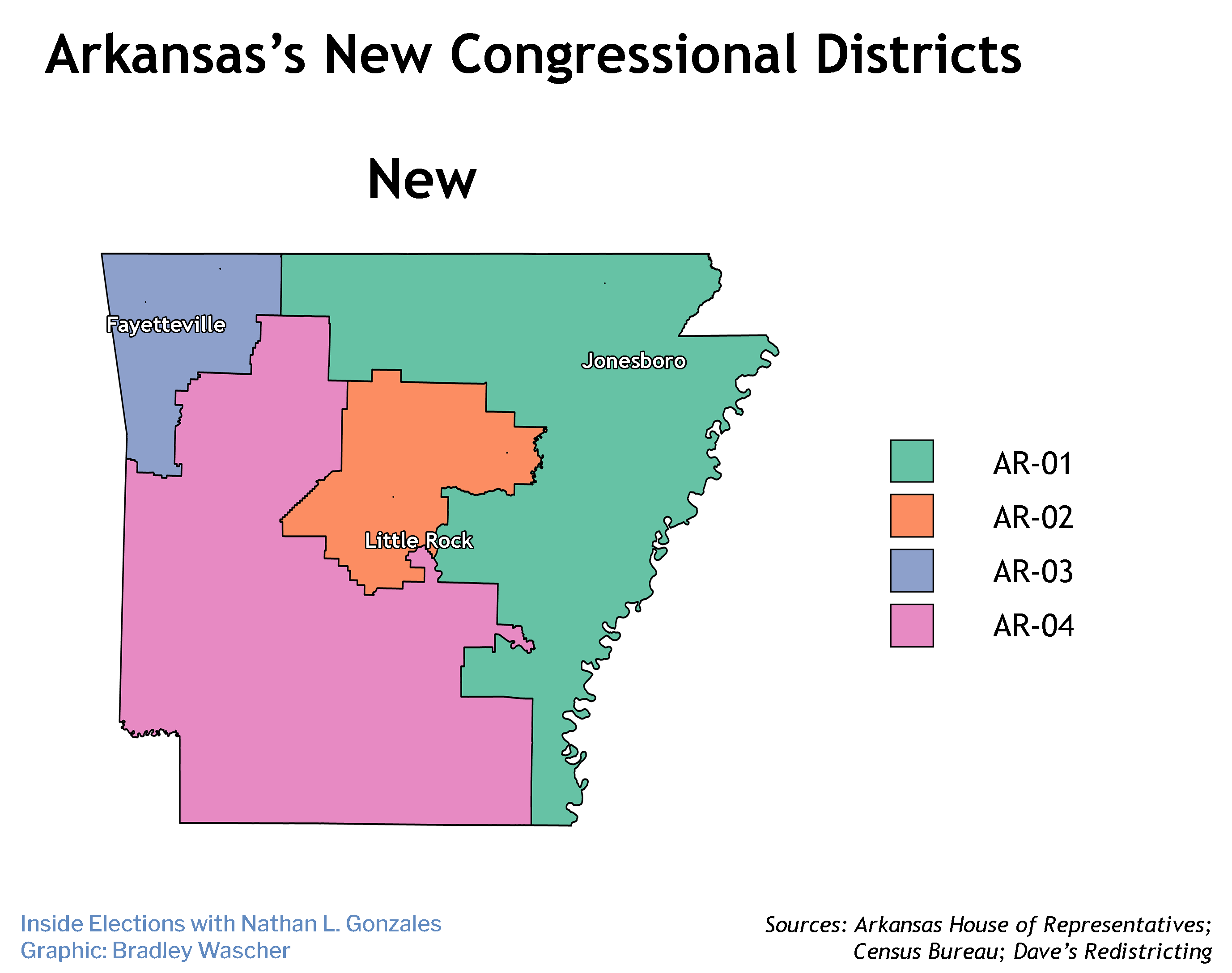In 2011, the last vestiges of the Democratic legislative majority in Arkansas drew a congressional map aimed to send at least two Democrats in Congress even as the party was in freefall.
The plan backfired, and after the 2012 elections, Republicans held all four of the state’s seats.
But later in the decade, political trends made the 2nd District competitive again despite the state’s overall Republican lean, and the Little Rock-based seat was heavily targeted by Democrats in 2018 and 2020.
Though the GOP held onto the 2nd in both cycles, state legislators weren’t interested in making that a tradition. So when redistricting rolled around last year, with Republicans in control of drawing the congressional map for the first time since Reconstruction, the 2nd was substantially altered to ensure GOP control for the coming decade.
As a result, barring some unforeseen event the Arkansas delegation will likely retain its 4R-0D breakdown in 2022 and beyond.

1st District
GOP Rep. Rick Crawford’s eastern Arkansas district remains largely unchanged, still spanning the length of the state from Missouri to Louisiana.
Most notably, the district picked up Boone and Marion counties in the north from the 3rd District, shed its Jefferson County portions to the 4th District, and extended for the first time into Pulaski County, picking up some heavily Democratic areas from the 2nd District east of Little Rock.
The new 1st would have voted for President Donald Trump, 69-28 percent. That means Crawford’s only vulnerability will come in the GOP primary, where he faces a challenge from state Rep. Brandt Smith of Jonesboro. But Smith raised barely any money in the last three months of 2021 and doesn’t look like much of a threat. Initial...

